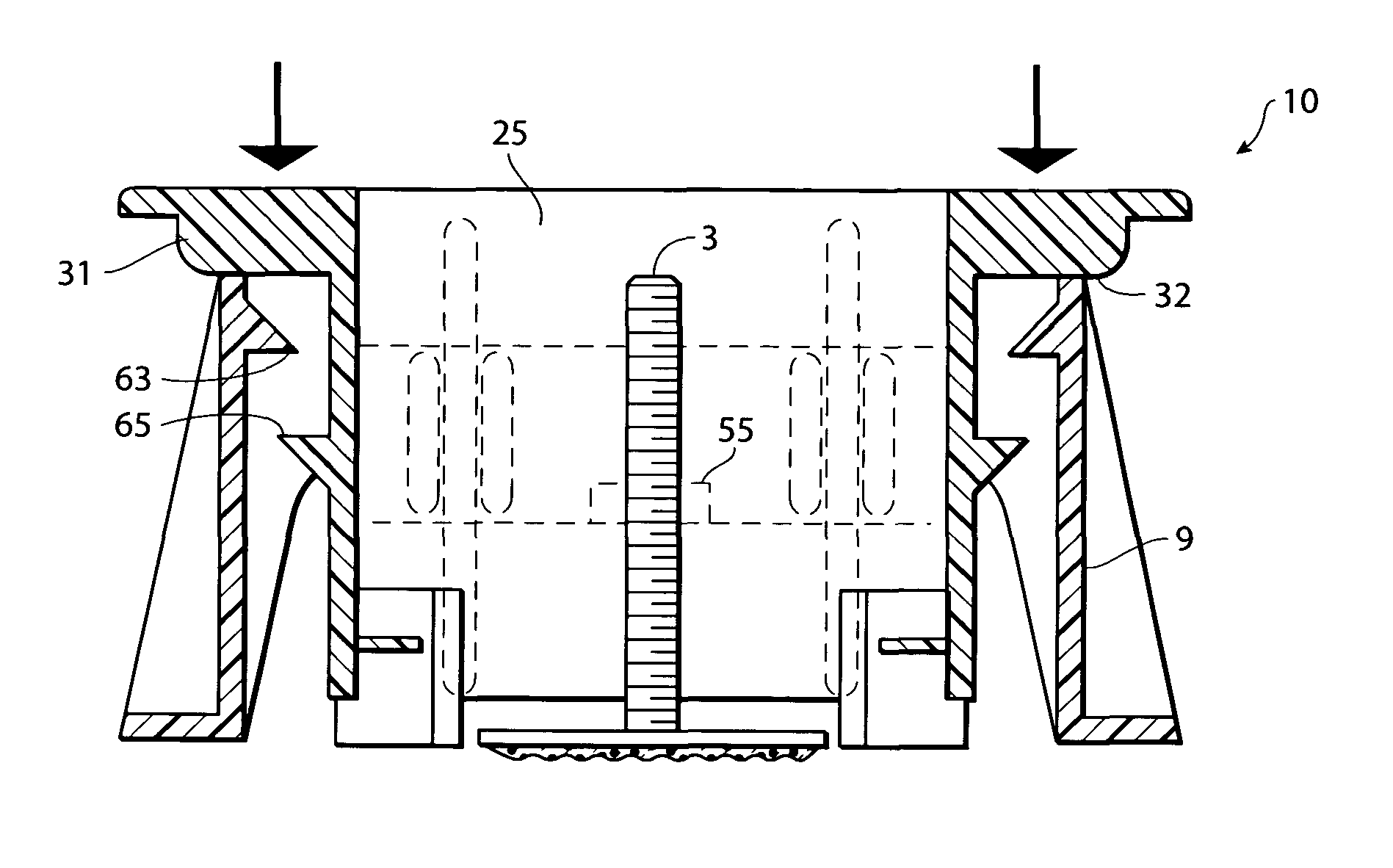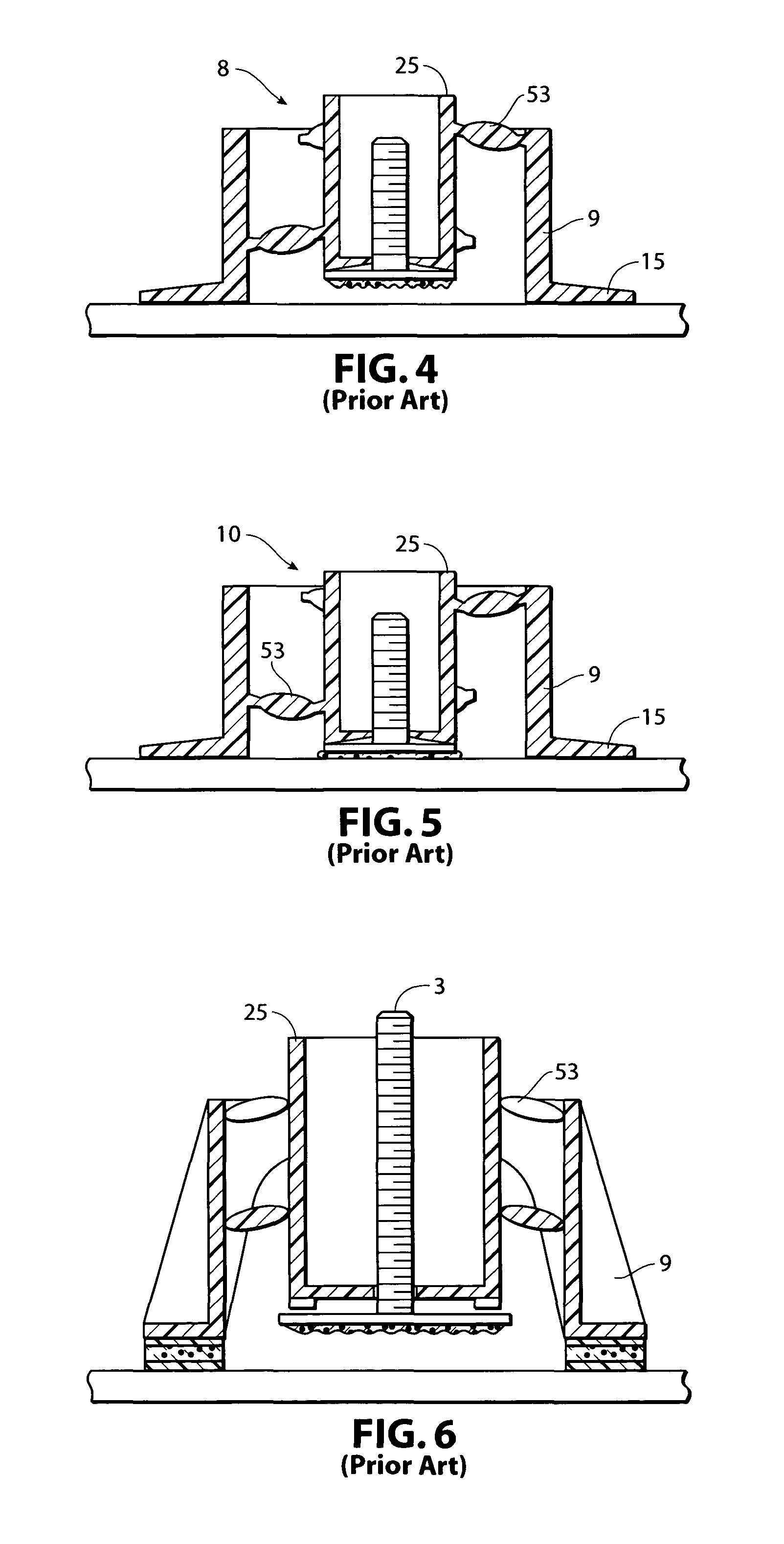Fixture with integral stops
a technology of fixing and stops, applied in the field of fixings, can solve the problems of significant disadvantages of adhesive backed fixtures described in the above-identified patents, constructions which will not allow the use of clamps to secure attachments, and the use of suction cups is limited to being used on smooth substrates. the effect of quick and easy removal of the attachment and the substra
- Summary
- Abstract
- Description
- Claims
- Application Information
AI Technical Summary
Benefits of technology
Problems solved by technology
Method used
Image
Examples
Embodiment Construction
[0032]While the present invention is susceptible of embodiment in various forms, as shown in the drawings, hereinafter will be described the presently preferred embodiments of the invention with the understanding that the present disclosure is to be considered as an exemplification of the invention, and it is not intended to limit the invention to the specific embodiments illustrated.
[0033]As shown in FIGS. 7-15, I have provided an improved fixture 1 for affixing attachments 3 to a substrate 6. The fixture 1 includes two primary components, an outer support member 9 and an inner retainer 25.
[0034]The outer support member 9 includes adhesive pads 16 at the outer support member's distal extremities 15 for temporarily affixing to a substrate 6. The outer support member 9 may be oval, circular or rectangular in construction. However, as shown in the figures, a preferred support member presents a substantially rectangular footprint, and includes a pair of side walls 11 and end walls 13. ...
PUM
| Property | Measurement | Unit |
|---|---|---|
| flexible | aaaaa | aaaaa |
| adhesive | aaaaa | aaaaa |
| pressure | aaaaa | aaaaa |
Abstract
Description
Claims
Application Information
 Login to View More
Login to View More - R&D
- Intellectual Property
- Life Sciences
- Materials
- Tech Scout
- Unparalleled Data Quality
- Higher Quality Content
- 60% Fewer Hallucinations
Browse by: Latest US Patents, China's latest patents, Technical Efficacy Thesaurus, Application Domain, Technology Topic, Popular Technical Reports.
© 2025 PatSnap. All rights reserved.Legal|Privacy policy|Modern Slavery Act Transparency Statement|Sitemap|About US| Contact US: help@patsnap.com



